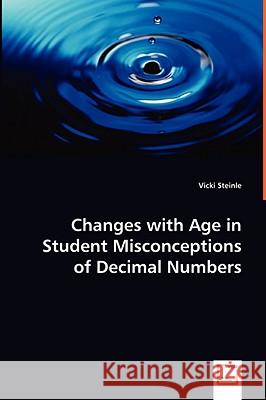Changes with Age in Student Misconceptions of Decimal Numbers » książka
Changes with Age in Student Misconceptions of Decimal Numbers
ISBN-13: 9783639040289 / Angielski / Miękka / 2008 / 320 str.
Inspecting a mathematics textbook might give the impression that, in order to be competent with decimal numbers, all that students need to do is remember a few rules for placing the decimal point, and otherwise perform operations with decimal numbers as if they were whole numbers. Yet international studies show that many students do not make this apparently small step with ease. This thesis reports on a longitudinal study of student understanding of decimal notation. Over 3000 students completed nearly 10000 tests over a 4-year period; the diagnostic test used in this study was created by extending and refining tests in the literature to identify students with one of 12 misconceptions about decimal notation. Only 30% of Grade 6 students and 70% of Grade 10 students demonstrated expertise on this test and about 25% of students between Grades 7 and 10 completed tests by choosing the decimal with the fewest digits as the largest number, a behaviour which results from several different ways of thinking. Despite its high prevalence, this particular behaviour is not well known amongst teachers. The phenomena of persistence, hierarchy and regression were defined and investigated.











